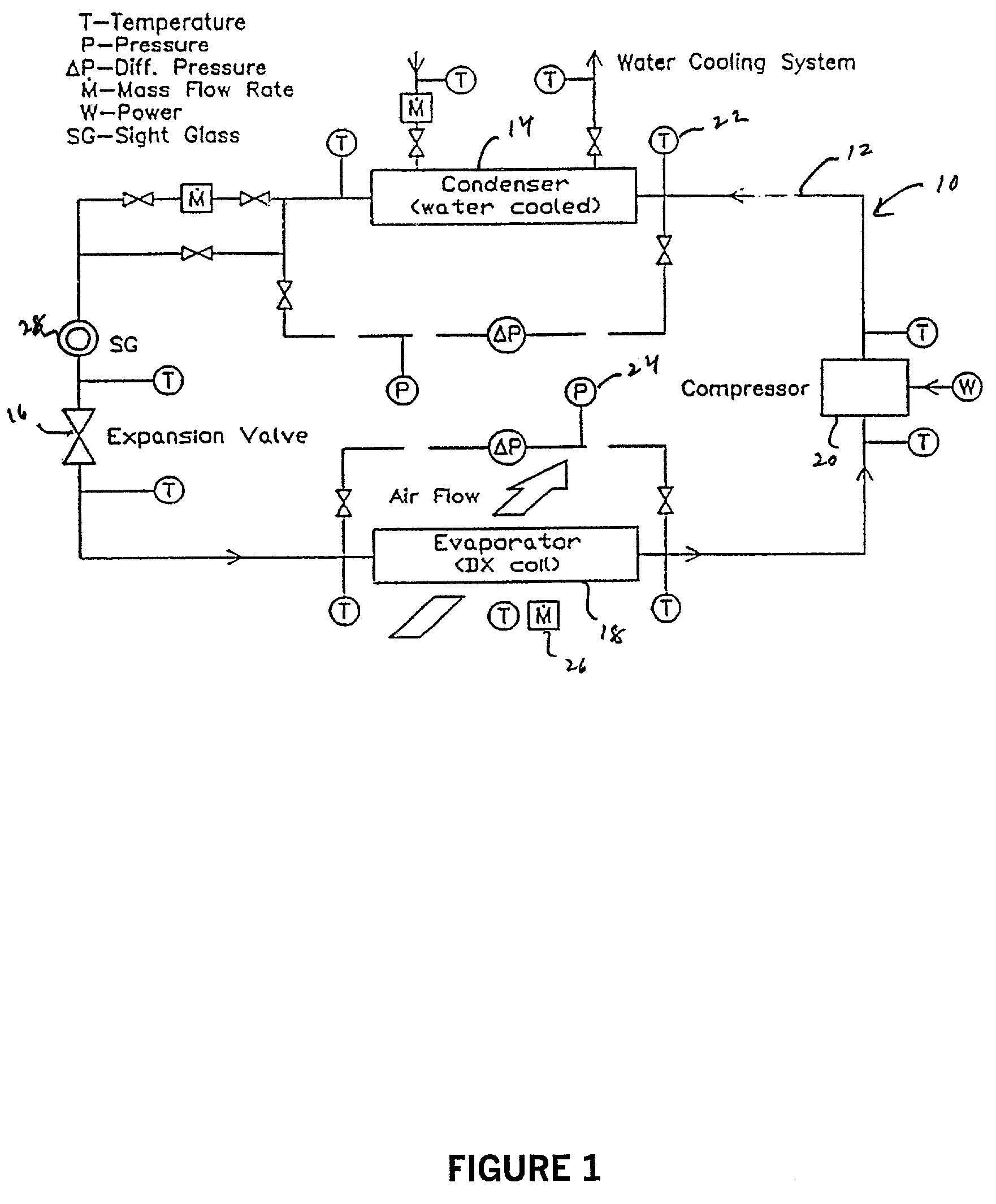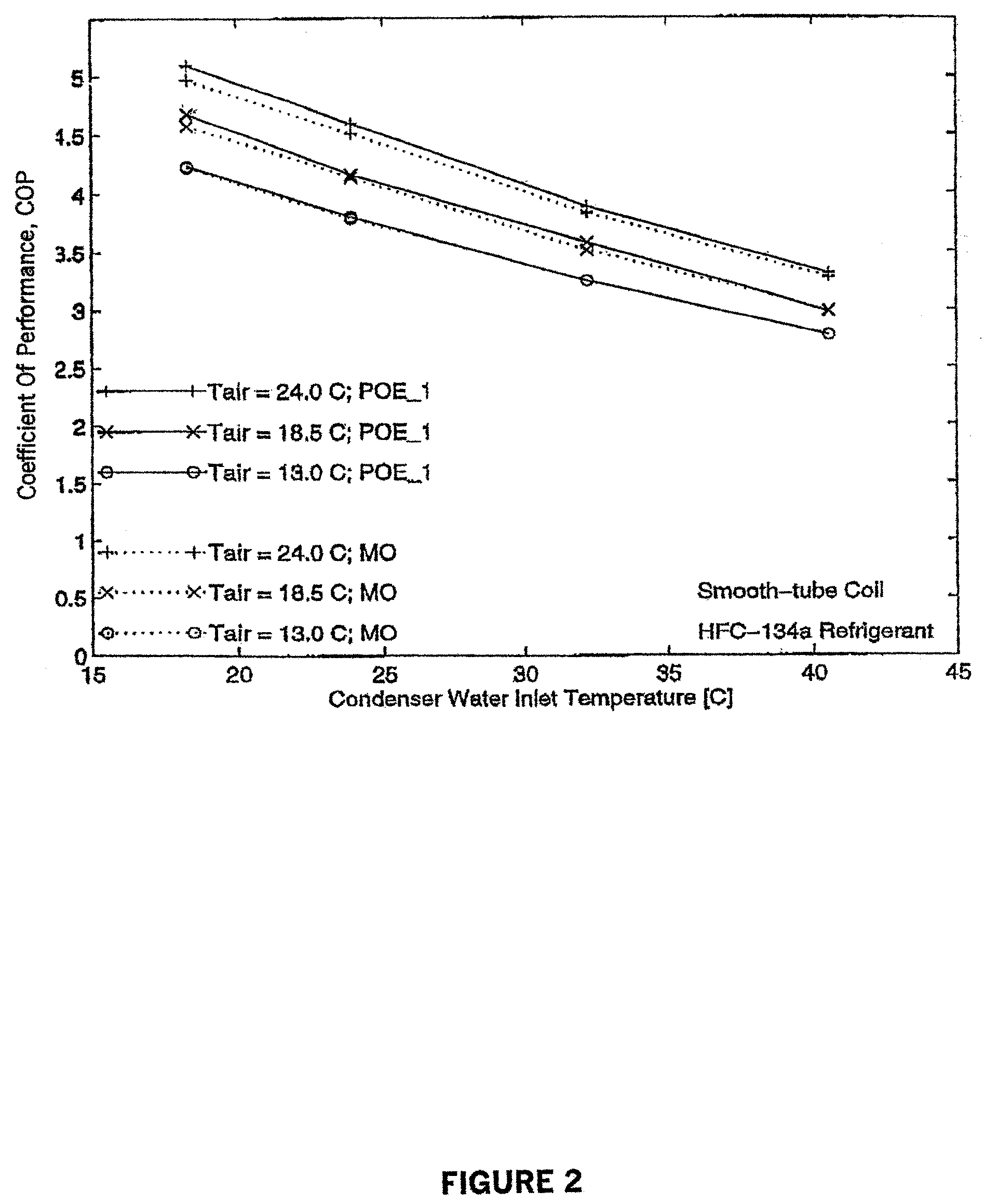Method of improving performance of refrigerant systems
a refrigerant system and performance improvement technology, applied in the field of refrigerant system performance improvement, can solve the problems of increasing the energy consumption of refrigerant system, refrigerator and air conditioner collectively consume enormous amounts of energy, etc., and achieve the effect of improving the performance of the refrigerant system such as the refrigerator, freezer, soda fountain dispenser and other cooling devices
- Summary
- Abstract
- Description
- Claims
- Application Information
AI Technical Summary
Benefits of technology
Problems solved by technology
Method used
Image
Examples
example 1
AND A
[0063]Two refrigerant working fluids were tested in a vapor compression refrigeration system similar to that described in FIG. 1. One of these fluids (Example A) comprises a heat transfer fluid and a mineral oil lubricant known to be immiscible with the heat transfer fluid. The mineral oil is an Iso 32 naphthentic refrigeration oil. The second working fluid (Example 1) comprises a lubricant comprising a polyol ester which is known to be miscible with the heat transfer fluid. The heat transfer fluid used in both Examples A and 1 is 1,1,1,2-tetrafluoroethane (R134a). The polyol ester of Example 1 is formed from pentaerythritol and a mixture of 37 weight percent n-pentanoic acid, 20 weight percent of a mixture of 2-methylbutanoic acid and 3-methylbutanoic acid and 43 weight percent 3,5,5-trimethylhexanoic acid.
[0064]These refrigerant working fluids were tested in a vapor-compression refrigeration system similar to that used in actual buildings. This system is designed to provide a...
example 2
[0103]The coefficient of performance was measured for refrigeration apparatus described hereabove using a second miscible working fluid comprising 1,1,1,2-tetrafluoroethane heat transfer fluid and a second polyol ester lubricant (POE #2). The second polyol ester is formed from an alcohol mixture of 65 weight percent pentaerythritol and 35 weight percent dipentaerythritol and a mixture of straight chain acids of 5 to 10 carbon atoms present in the following ranges (53–63 no. % nC5; 5–15 no. % nC6; 7–17 no. % nC7; 7–17 no.% nC8; 0–10 no. % nC9 and 0–10 no. % nC10 The conditions under which the coefficient of performance was measured for this Example 2 working fluid were the same as those for the working fluids of Examples 1 and A. The comparative results for COP for the miscible working fluids of Examples 1 and 2 (expressed as POE #1 and #2) are shown in FIG. 6.
[0104]The coefficient of performance results of the working fluids of Examples 1 and 2 are defined relative to the immiscible...
PUM
 Login to View More
Login to View More Abstract
Description
Claims
Application Information
 Login to View More
Login to View More - R&D
- Intellectual Property
- Life Sciences
- Materials
- Tech Scout
- Unparalleled Data Quality
- Higher Quality Content
- 60% Fewer Hallucinations
Browse by: Latest US Patents, China's latest patents, Technical Efficacy Thesaurus, Application Domain, Technology Topic, Popular Technical Reports.
© 2025 PatSnap. All rights reserved.Legal|Privacy policy|Modern Slavery Act Transparency Statement|Sitemap|About US| Contact US: help@patsnap.com



